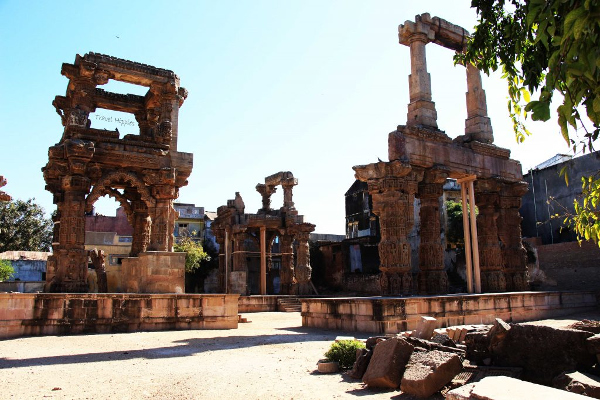Sidhpur, literally translating into a ‘pious place,’ is a sacred town, about 103 km from Ahmedabad in Gujarat. Located on the banks of river Saraswati, the town is dotted with glorious temples, kunds, ashrams and other sacred structures. Named after the great Solanki ruler of Gujarat – Siddhraj Jaisinh – Sidhpur enjoyed supreme prominence and glory especially when the king built Rudra Mahalaya Temple in the 12th-century.
A magnificent temple dedicated to Lord Shiva, Rudra Mahalaya is almost in ruins today, and is a protected monument under the Archaeological Survey of India.
Another prime attraction is Bindu Sarovar, one of the holiest and most ancient lakes in India. According to the Hindu religion, this is where people must perform ‘Matru Shraddh,’ an annual ritual for the mothers who’re no longer alive.
Sidhpur Camel Festival, a traditional fair held every year during the Kartik month (first month of the Hindu calendar) at the banks of Sabarmati river is a great time to visit this town. It is essentially a livestock fair in which the locals and tribals from the surrounding villages participate. It’s a vibrant and colourful affair; the Kartikeya Temple also opens up for a week during this fair.
The gorgeous old havelis and mansions of the Bohra Muslims, some of them over a 100 years old, have a strong European flavour. Thus, a walk through ‘Bohra Vad’ is highly recommended. The delicate wooden architecture, and the opulence and grandeur is remarkable and instantly transports one to 19th-century Europe.
While Sidhpur really enjoyed the pinnacle of prominence and glory in the 10th-century under the rule of the local dynasty, it was around the 15th-century, when it came under the Mughal rule of Akbar. That’s when the look and feel of this iconic heritage town shifted from a Hindu one to a place with a strong Mughal and European influence.
Source: India
Image Courtesy: Travel Hippies
You may also like
-
India Can’t Afford to Remain Stagnant at this Juncture, Says PM Modi; Asks People to Buy Locally-Made Goods
-
Stolen Artefacts to be Returned to India from Scotland Museums
-
Netaji’s Hologram Statue at India Gate
-
10th Century Stone Idol of Goat Head Yogini IllegallyRemoved from A Temple in Lokhari, Banda, UP Being Returned to India
-
Three Indian Painted Antarctica “The White Continent” With Indian Flag Measuring 7500 Square Feet
